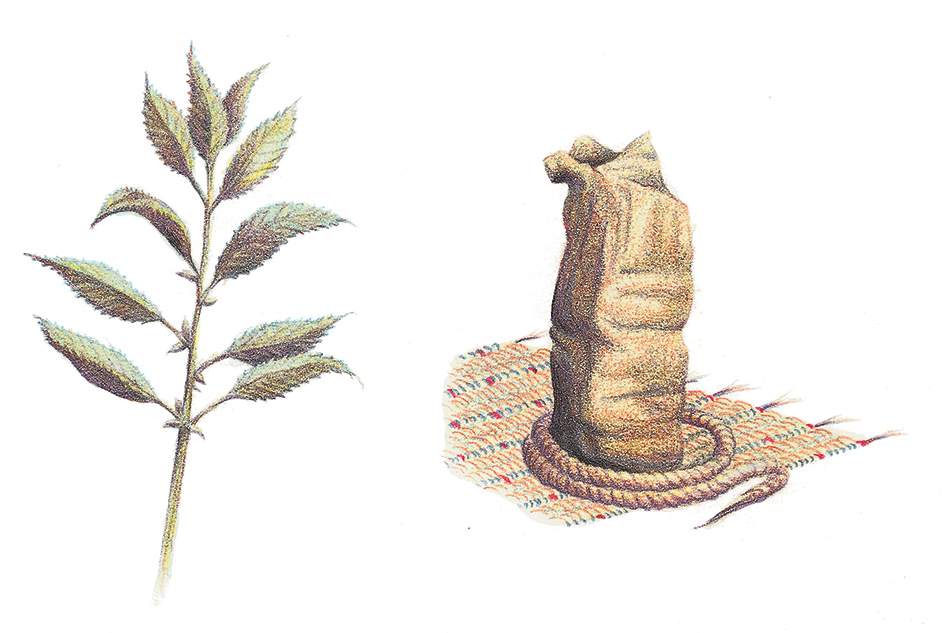Jute << joot >> is a long, soft, shiny fiber that can be spun into coarse, strong threads. It is one of the cheapest natural fibers, and is second only to cotton in amount produced and variety of uses. Jute fibers are composed primarily of the plant materials cellulose, lignin, and pectin. Both the fiber and the plant from which it comes are commonly called jute.

Jute is used chiefly to make cloth for wrapping bales of raw cotton, and to make gunny sacks and gunny cloth. The fibers are also woven into curtains, chair coverings, carpets, and burlap. But in many of these uses, synthetic materials are replacing jute. Very fine threads of jute are made into imitation silk. The fibers are used alone or blended with other types of fibers to make twine and rope. Jute butts, the coarse ends of the plants, are used to make inexpensive cloth.
Jute is a rainy season crop that grows best in warm, humid climates. India, Bangladesh, and China rank as the world’s main producers of jute. Jute is graded (rated) according to its color, strength, and fiber length. The fibers are off-white to brown and 3 to 15 feet (0.9 to 4.5 meters) long. Jute is pressed into bales for shipment to manufacturers.
